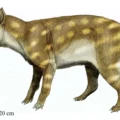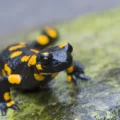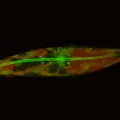While their scaly armor and long claws look vaguely reptilian, armadillos belong to the same group of mammals as sloths and anteaters. There are nearly two dozen species of armadillos, from six-inch long “pink fairies” to giant armadillos that measure five feet long from snout to tail. The nine-banded armadillo has long been considered the most widespread, ranging from the central United States to Argentina. However, a new study published in Systematic Biology used DNA and museum collections to reveal that what has been called the nine-banded armadillo is actually four distinct species, including one that’s new to science.
“It was widely accepted that the nine-banded armadillo, Dasypus novemcinctus, ranges from northern Argentina all the way to southern Illinois, but in recent years, some scientists have been putting forth evidence that this is actually a complex of multiple different species,” says Frédéric Delsuc, a research director at the National Center for Scientific Research (CNRS) in France and the study’s senior author. “By studying the DNA of armadillos from all along this range, we put together a very detailed genomic analysis that makes us very confident that they are actually four species.”
The finding is particularly noteworthy in the United States, because the armadillo formerly known as nine-banded has made its way from Mexico to many US states in the past two centuries and is the official small mammal of Texas. “With the new classification, the armadillo that’s found in the United States should now be called the Mexican long-nosed armadillo,” says Anderson Feijó, assistant curator of mammals at the Field Museum in Chicago’s Negaunee Integrative Research Center and a co-author of the study. Moreover, “the new species, the Guianan long-nosed armadillo, is the first armadillo described in the last 30 years.”
Delsuc began working on armadillo genetics in 1998 comparing samples from the invasive US populations with those found in French Guiana. At the time, he was sequencing mitochondrial DNA, a type of genetic material that is only inherited through the mother. His work pointed to splits within the nine-banded species, but at the time, there wasn’t enough evidence to formally separate them into different species, as a more geographically widespread sampling was lacking. Still, that was “the first evidence that there was something really strange going on,” says Delsuc.
The authors of the new study, including Delsuc, Feijó, Mathilde Barthe, a PhD student with Delsuc at the University of Montpellier and the study’s first author, and Maria-Clara Arteaga from the Center for Scientific Research and Higher Education at Ensenada in Mexico, worked to create a much larger sample set of nine-banded armadillos. This allowed the team to study how the animals’ physical characteristics, as well as their DNA, changed across their wide range. In addition to sampling blood and tissue from armadillos hit by cars, the scientists were able to supplement their sampling with museum specimens, for a total of 81 armadillos.
“Museums were crucial to the study,” says Feijó. Natural history collections, including those at the Field Museum, contain skeletons and skins that serve as vouchers for scientists studying those species. The researchers were able to clip tiny pieces of dried skin from the armadillo specimens at numerous museums. They then used chemicals to eat away the tissues, leaving DNA behind. “Most of the specimens were collected before all these DNA molecular techniques were available. So in addition to museum collections being valuable to the research being done at the time a specimen is collected, it can be used in the future for things we can’t even predict,” says Feijó.
The combination of genetic data and morphological, or physical, traits led the scientists to the conclusion that the nine-banded armadillo, Dasypus novemcinctus, is actually four genetically distinct species. Accordingly, several subspecies within this species have been elevated to being species in their own right. The armadillos found in Mexico and the United States, formerly in the subspecies Dasypus novemcinctus mexicanus, are now just Dasypus mexicanus: the Mexican long-nosed armadillo. The subspecies fenestratus, found in the central part of the range, is now its own species, and the original species name novemcinctus is now restricted to South America.
Meanwhile, the data showed that another branch of the armadillo family tree didn’t belong in any of these three pre-existing groups. A region of northeastern South America, known as the Guiana Shield, is home to the newest armadillo species: Dasypus guianensis, the Guianan long-nosed armadillo.
The new armadillo is a bit bigger than the other three species, has a hairless shell, a robust, dome-shaped skull, and an additional bone in its spine. But overall, all four species look very similar to the untrained eye. “They’re almost impossible to differentiate in the field,” says Delsuc.
That begs the question: if these armadillos look so similar that it takes DNA analysis to tell them apart, then why bother splitting them into different species? Just because the armadillos look similar to each other, their genes tell a different story. “Now that we know there are four distinct species, we might also expect they have their own ecological requirements that might not be the same,” says Feijó.
These different needs in terms of food and habitat could be important for scientists working to preserve healthy populations of these animals in different areas. “Sometimes, biologists bring individuals from one area to another to repopulate,” Feijó notes. “Since they’re different species, with potentially different needs, they will not be able to integrate.” And while the nine-banded armadillo has not been considered endangered, “this discovery totally shifts the way we think about conservation for these species and the way we think about how threatened they are,” Feijó adds.
This study was contributed to by scientists from the National Center for Scientific Research (CNRS), the University of Montpellier, Uppsala University, the University of Cyprus, the Center for Scientific Research and Higher Education at Ensenada, the Field Museum, the Chinese Academy of Sciences, Valdosta State University, and the Institut Pasteur de la Guyane.









No Comments
Leave a comment Cancel